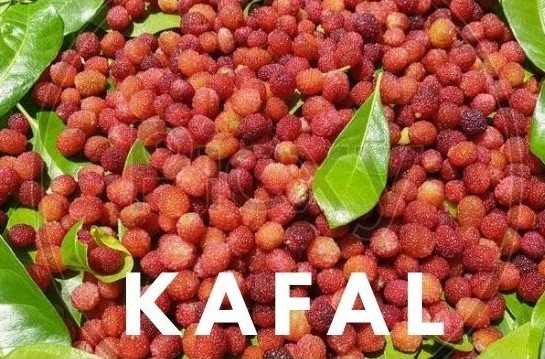Exploring Uttarakhand’s Pride: The State Fruit of Uttarakhand
Nestled amidst the majestic Himalayan ranges lies Uttarakhand, a land renowned for its pristine beauty, rich biodiversity, and vibrant culture. Among its numerous treasures is a symbol deeply ingrained in its agricultural heritage – the state fruit of Uttarakhand.
So, what exactly is the state fruit of Uttarakhand? Let’s embark on a journey to unravel this delightful mystery.
Uttarakhand, formerly known as Uttaranchal, is a state in the northern part of India, blessed with fertile soil, favorable climate, and diverse topography, making it conducive to the cultivation of a wide variety of fruits. If you want to know about Uttarakhand, one fruit stands out as the emblem of its agricultural prowess – the deliciously succulent and aromatic Kafal.
Kafal, scientifically known as Myrica esculenta, belongs to the Myricaceae family and is native to the Himalayan region. It is a small, berry-like fruit that grows abundantly in the hilly terrain of Uttarakhand, particularly in the districts of Almora, Pithoragarh, and Nainital.
The Kafal tree is a deciduous shrub that thrives in the cool temperate climate of Uttarakhand, usually found at altitudes ranging from 1000 to 2500 meters above sea level. It is characterized by its glossy, elliptical leaves and clusters of small, round fruits that ripen to a deep crimson hue during the summer months.
The significance of Kafal extends beyond its delectable taste and aesthetic appeal. For the people of Uttarakhand, particularly the indigenous communities inhabiting the mountainous regions, Kafal holds immense cultural and traditional value.

During the onset of summer, when the Kafal trees are laden with ripe fruits, it marks the beginning of a joyous celebration known as the Kafal Festival. This festival not only signifies the arrival of the summer season but also serves as a time for communities to come together, revel in the abundance of nature, and partake in traditional folk songs, dances, and rituals.
In addition to its cultural significance, Kafal holds a special place in the culinary traditions of Uttarakhand. The fruit is relished in various forms – fresh, dried, or processed into jams, jellies, and syrups. Its tangy-sweet flavor adds a unique dimension to local delicacies, making it a sought-after ingredient in traditional recipes.
Moreover, Kafal is revered for its medicinal properties and nutritional benefits. Rich in antioxidants, vitamins, and minerals, it is believed to boost immunity, aid digestion, and promote overall well-being. In traditional Ayurvedic medicine, Kafal is often used to treat respiratory ailments, improve vision, and enhance vitality.
Despite its cultural and nutritional significance, Kafal faces certain challenges that threaten its sustainability. Rapid urbanization, deforestation, and climate change pose serious threats to the natural habitat of Kafal trees, leading to a decline in their population.
To address these challenges, concerted efforts are underway to promote sustainable farming practices, conserve biodiversity, and raise awareness about the importance of preserving indigenous fruits like Kafal. Initiatives such as agroforestry, community-based conservation projects, and eco-tourism are playing a pivotal role in safeguarding the precious heritage of Uttarakhand’s flora and fauna.
In conclusion, the state fruit of Uttarakhand, Kafal, is not just a culinary delight but a symbol of the state’s rich cultural heritage, ecological diversity, and traditional wisdom. As we celebrate the bounty of nature and embrace sustainable practices, let us cherish and protect this invaluable treasure for generations to come.










